New York just debuted a $1.6 billion train hall to upgrade its notorious Penn Station, complete with skylight ceilings and a premium lounge - see inside
Thomas Pallini

- Moynihan Train Hall at New York's Pennsylvania Station opened to the public on New Year's Day, after three years of construction and a total cost of $1.6 billion.
- Amtrak is the primary tenant with its own waiting rooms and a new premium lounge for first class and frequent riders.
- Long Island Rail Road commuters also able to use the facility, but NJ Transit will continue use the old station.
Just hours after the ball dropped in Times Square to mark the arrival of a new year, a new era for train travel was inaugurated just 10 blocks to the south.
Moynihan Train Hall at Pennsylvania Station opened to the public on January 1, giving the busiest train station in North America a long-overdue and much-needed upgrade. The $1.6 billion facility took three years to build and is in part an attempt to remedy the mistakes of the past, when the original - and opulent - Pennsylvania Station was demolished in the 1960s to make way for Madison Square Garden.
In the 60 years since, those arriving into the city on Amtrak, NJ Transit, and Long Island Rail Road trains were relegated to a subterranean labyrinth that quickly proved inadequate to meet the needs of a growing city. Friday's grand-opening marks the end of a 30-year endeavor for Amtrak, which had been planning to expand across 8th Avenue into the James A. Farley Post Office building for decades.
Amtrak, Long Island Rail Road, and New York City subway passengers will be the first to utilize the new facility while NJ Transit will still be located in the existing station. But on Friday, the city came down to see its long-awaited station and give it a proper New York welcome.
Take a look inside Moynihan Train Hall.
New York City lucked out by having the James A. Farley Post Office directly next to Pennsylvania Station, where the new Moynihan Train Hall would be built and completed 110 years after the original station opened its doors in 1910.
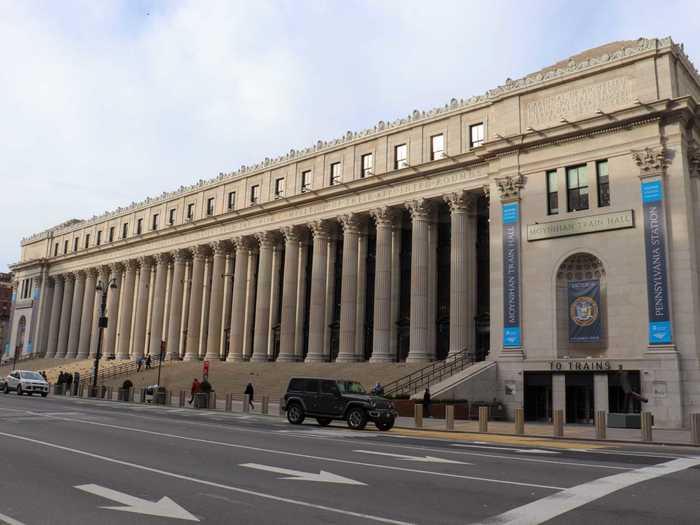
The hall is named for former US Senator Daniel Patrick Moynihan, who spearheaded the movement for a new Penn Station during his time in office.

The Farley building's classical Corinthian facade gives travelers a proper welcome compared to the dilapidated entrances of the station located just across the street.

It directly faces Madison Square Garden, which replaced the old Pennsylvania Station in 1963.
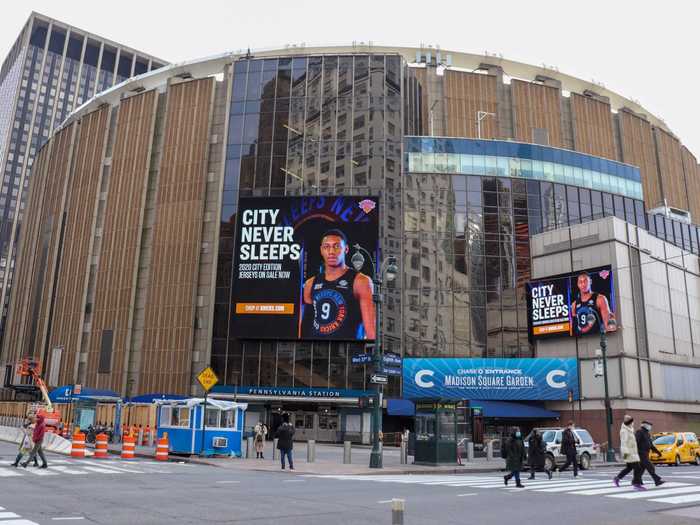
Travelers can enter on either side of the building's steps or through mid-block entrances on the adjacent side streets.
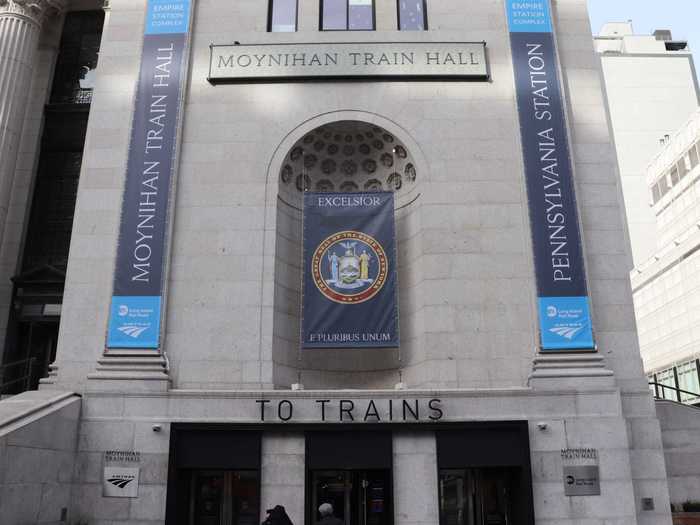
The difference between this facility and its predecessor is immediately clear when descending the gently sloped ramp into the main hall.
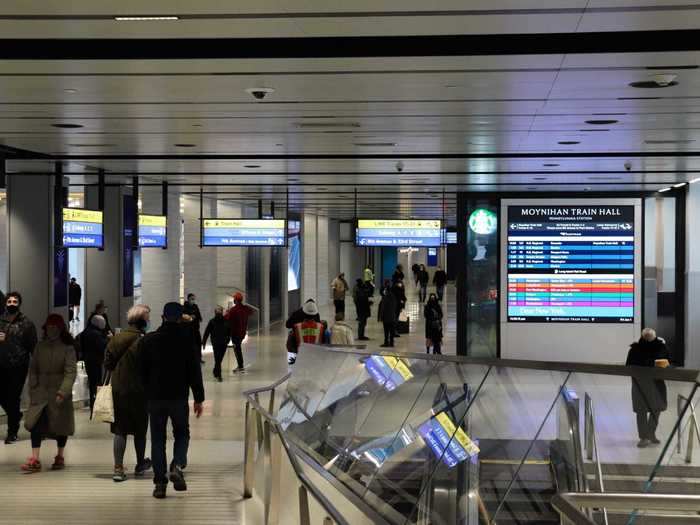
Large screens scattered throughout the station provide track information for Amtrak and Long Island Rail Road customers, eliminating the need for commuters to huddle around one sign as is common in the former station.

Long Island Rail Road passengers with soon-departing trains can immediately head downstairs to the new West End Concourse built under 8th Avenue, bypassing the main hall altogether.
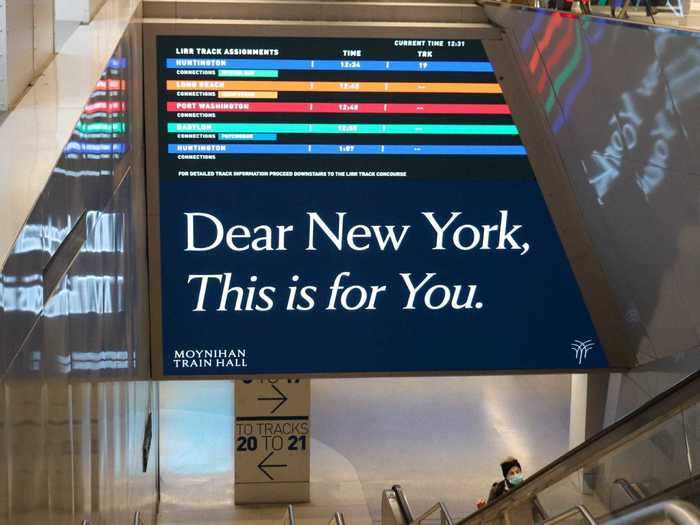
This concourse was opened in 2017 and offers access to all Long Island Rail Road and Amtrak tracks. It also connects Moynihan Train Hall with the existing station and the subways lines serving Penn Station.

But those in no rush can follow the airport-style signage to the main waiting area nearby. The open design of the hall makes it easy to find one's way.
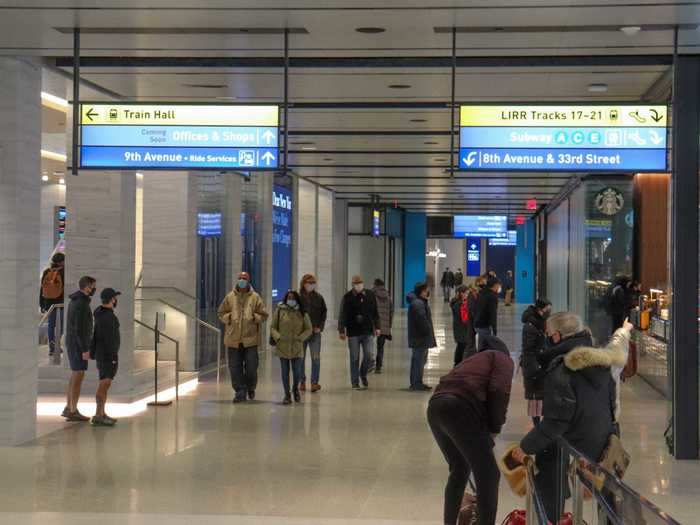
Riders are quickly greeted with the centerpiece of the massive 486,000-square-foot facility designed by Skidmore, Owings & Merrill in what was formerly the basement below the sorting floor of the post office.
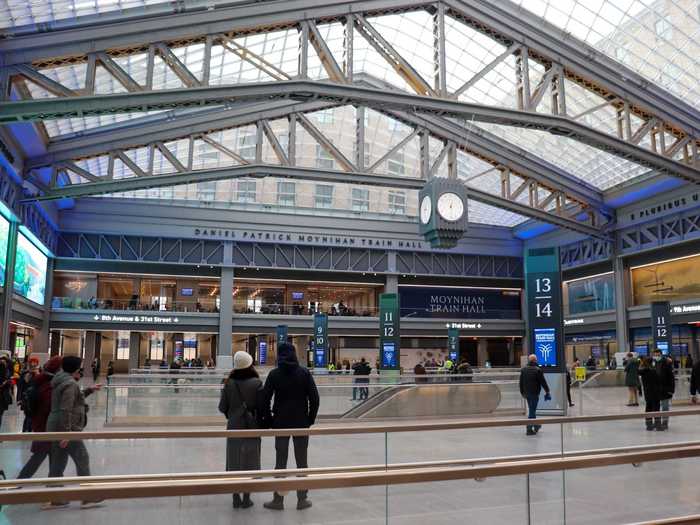
Parabolic windows above provide natural light to the hall, something Penn Station has historically lacked since moving underground.
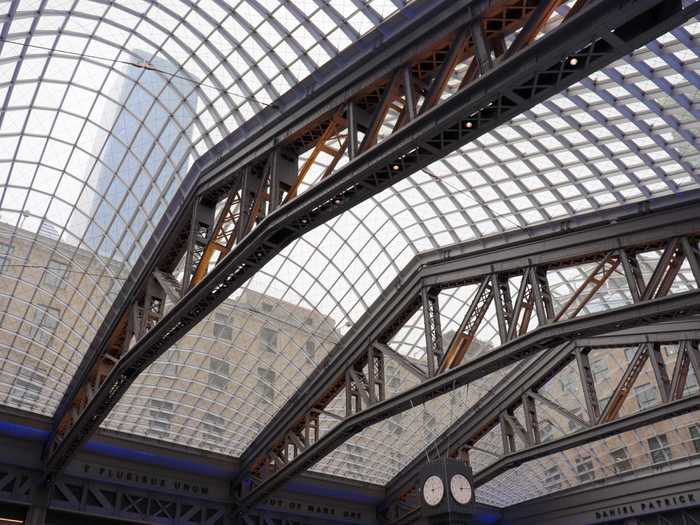
The trusses and columns are holdovers from the old post office and used to hold catwalks so inspectors could monitor the activity below.
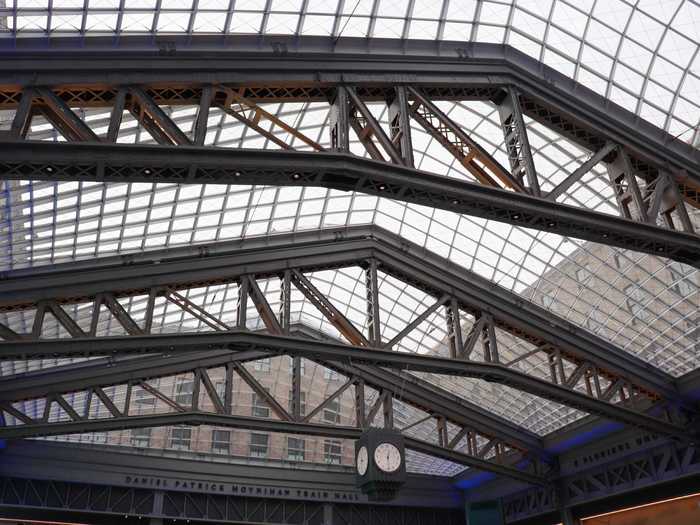
Luckily for Amtrak, Penn Station's tracks and platforms already extended across 8th Avenue and under the post office since the mail arrived by rail during this former post office's heyday.
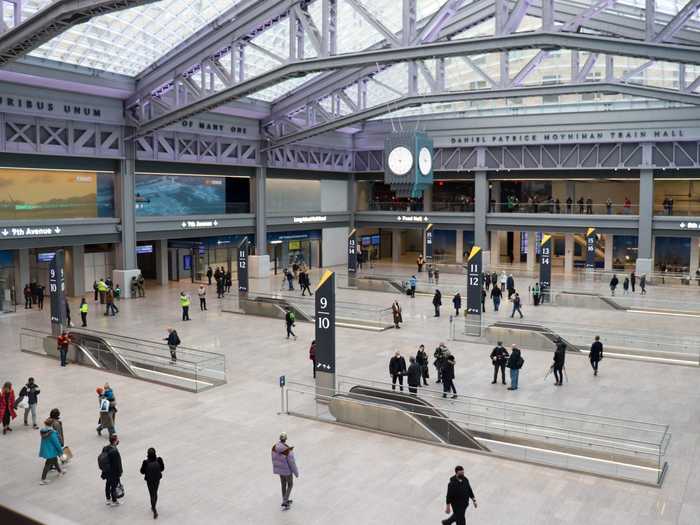
Amtrak only needed to refurbish the platforms and connect new escalators. Elevators were already in place from the old post office.
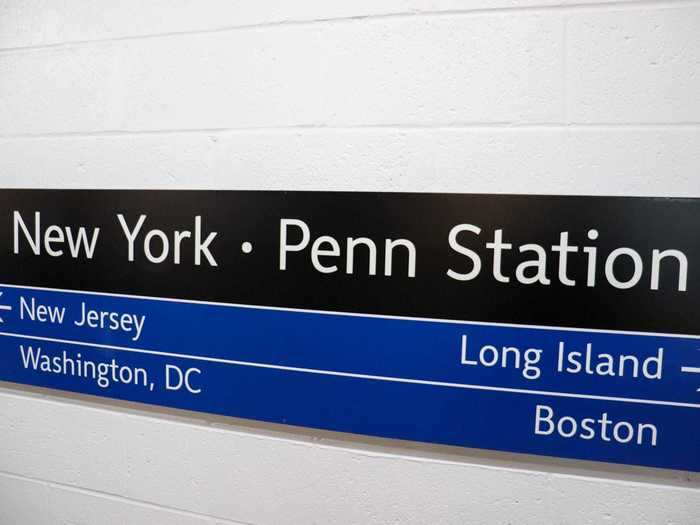
Tracks 5 to 16 are accessible from this hall from a mix of escalators and elevators. Stair access is located in the West End Concourse below.
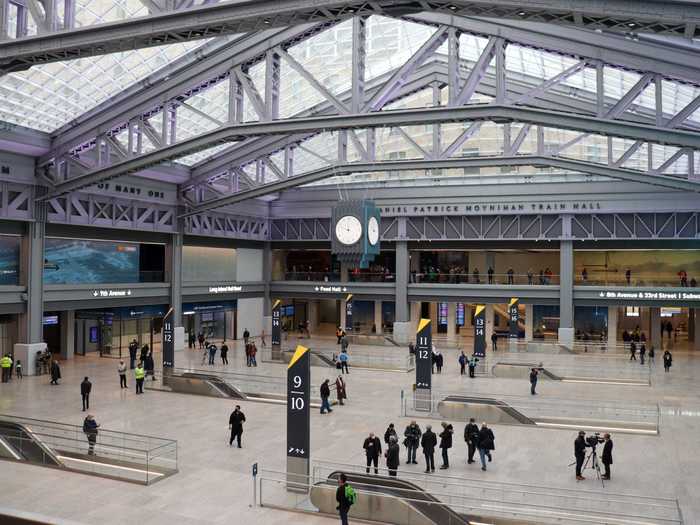
And right in the center is the hall's 12-foot-tall clock, a staple of any grand train station.
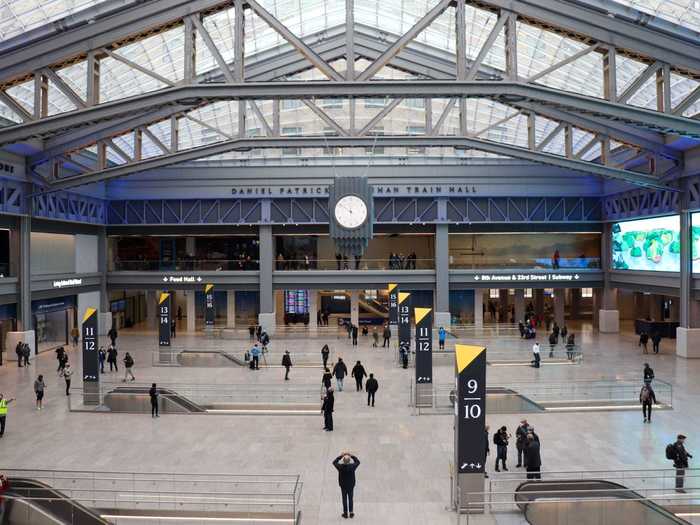
Amtrak has the majority of tracks here, with busy lines like as the Northeast Regional and Acela passing underneath. Long Island Rail Road trains on certain tracks can also be accessed from this hall, especially during peak hours.
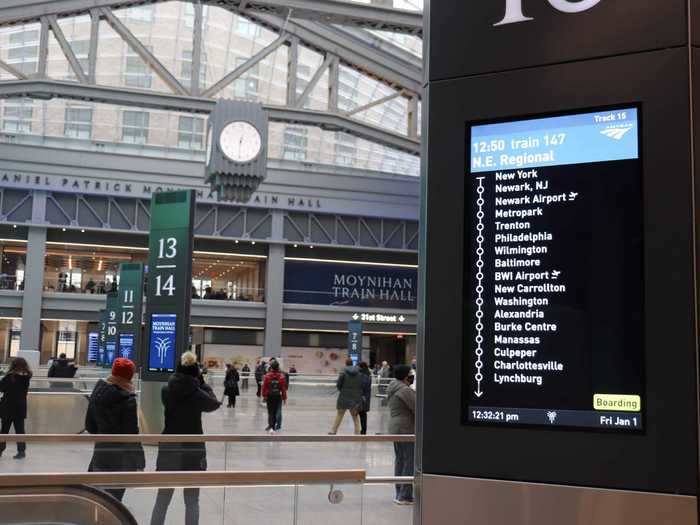
The new hall doubles the amount of access to the tracks, giving passengers more options and reducing congestion at the access points.
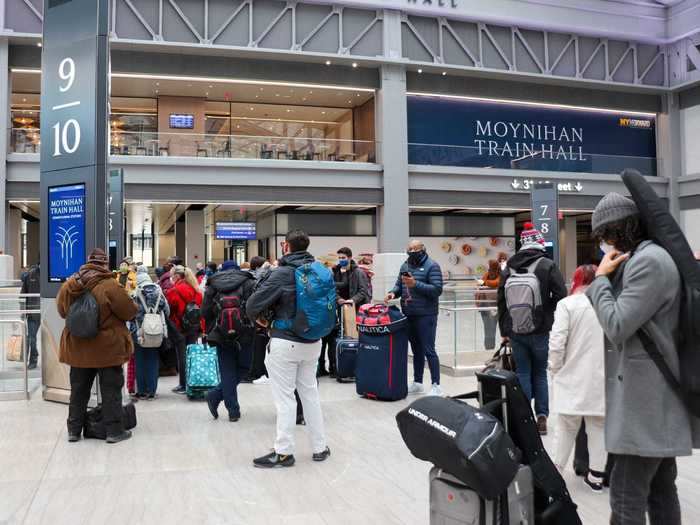
There's not much retail on the first floor yet, except for a Starbucks.
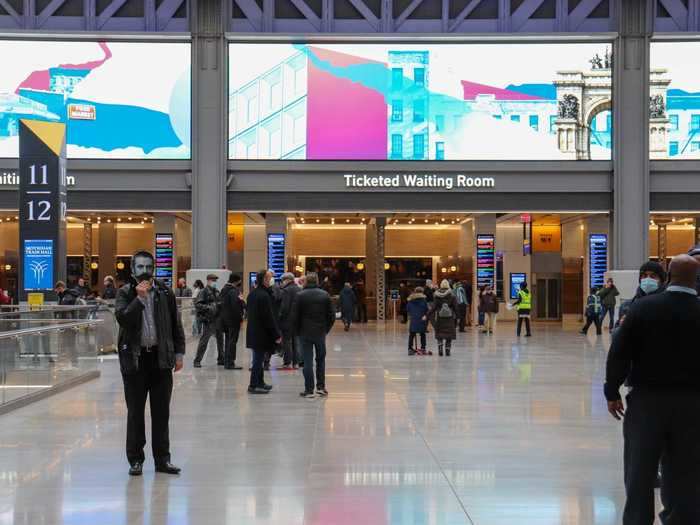
Amtrak has its own waiting room here that's accessible to ticketed passengers on Amtrak, NJ Transit, or Long Island Rail Road.
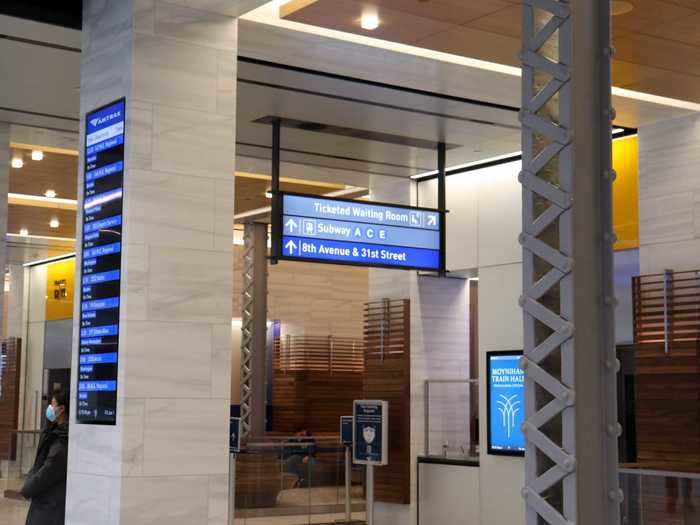
The quasi-private space offers a reprieve from the hall's hustle and bustle, and offers visitors cushioned seats complete with power outlets and a private restroom.
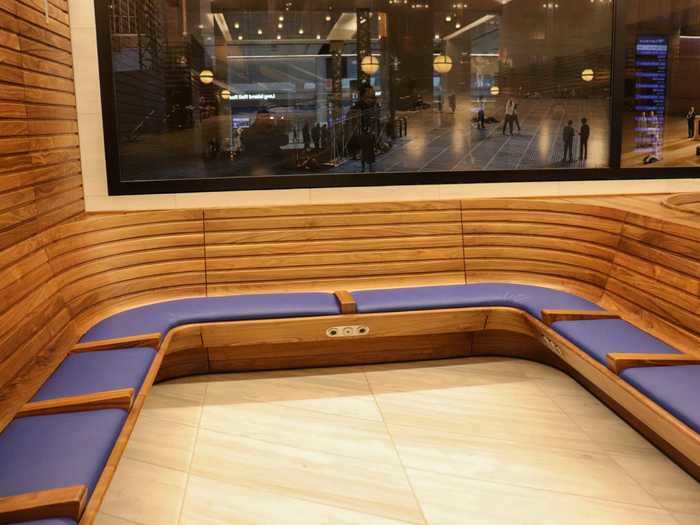
There's a direct line-of-sight to the main hall with no shortage of displays showing track information.
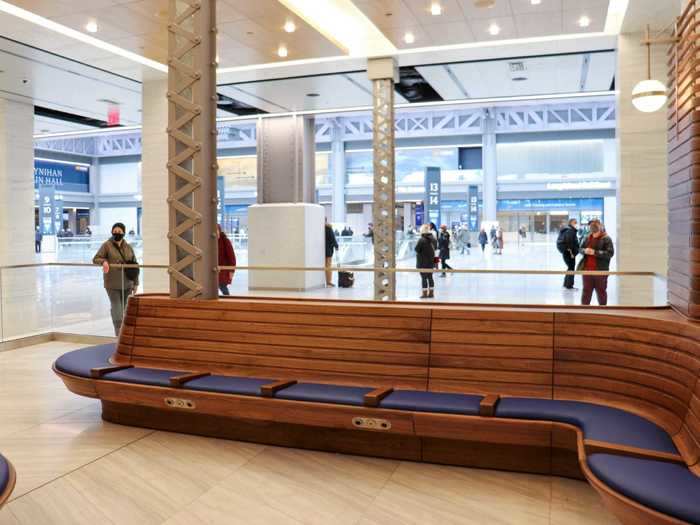
Artwork also lines the walls, depicting famous events that occurred in the old Pennsylvania Station before its demolition.
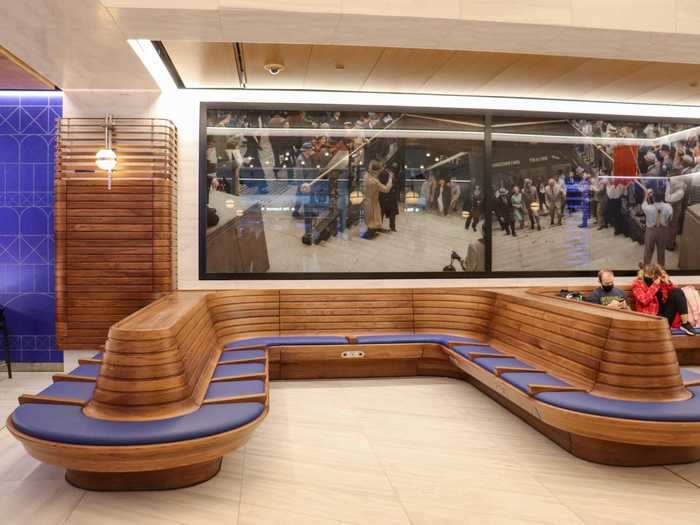
On the opposite side of the hall are the service centers for Amtrak and Long Island Rail Road.
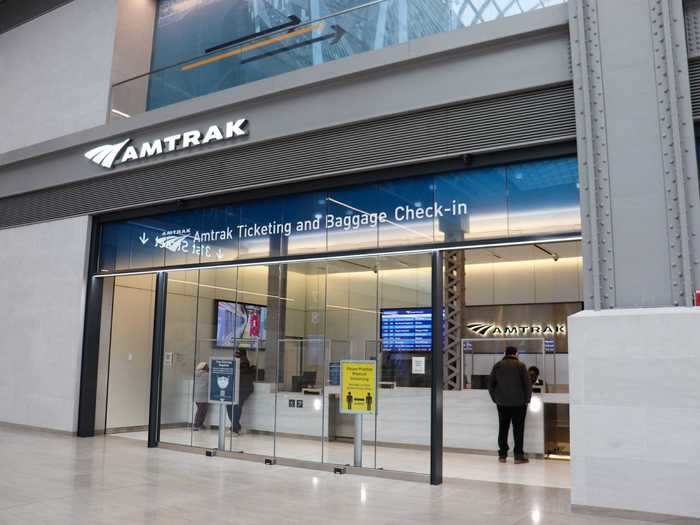
Amtrak's is modest with new plexiglass partitions as part of its COVID-19 response. The desk also has an airport-style conveyor belt that connects with a baggage sorting system on the second floor.
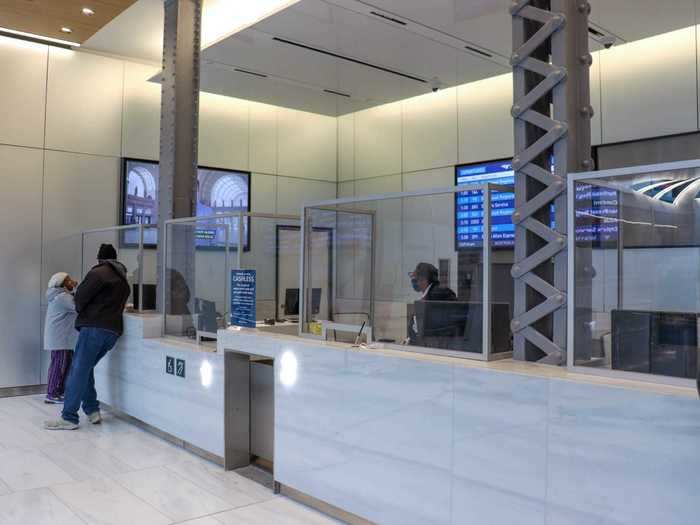
Six new self-service kiosks can also be found in the station, but Amtrak says more and more people are using their mobile devices for tickets when traveling.
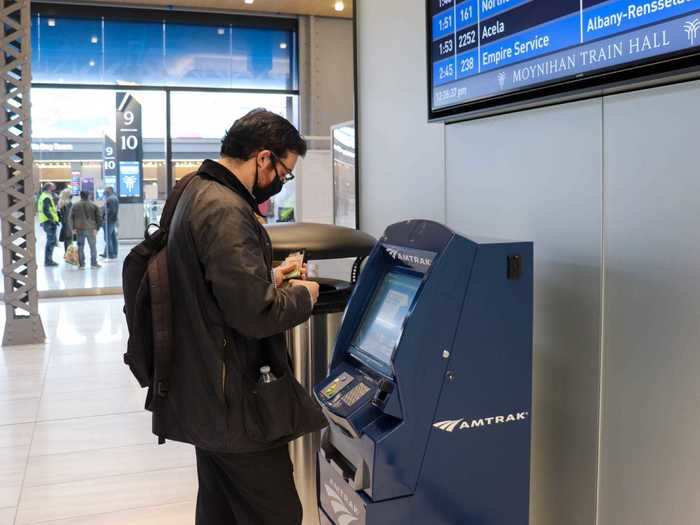
The Long Island Rail Road's service center similarly features a help desk and ticket kiosks.
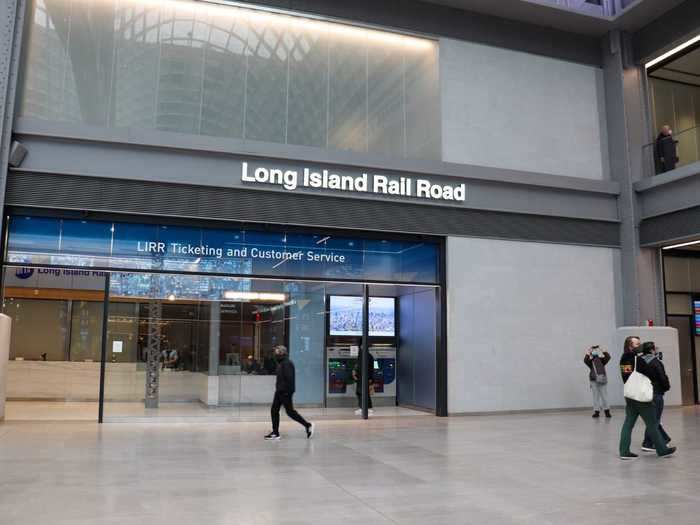
Face coverings are also required in Moynihan, as they are when riding Amtrak, and 25 of these hand sanitizer stations are found throughout.
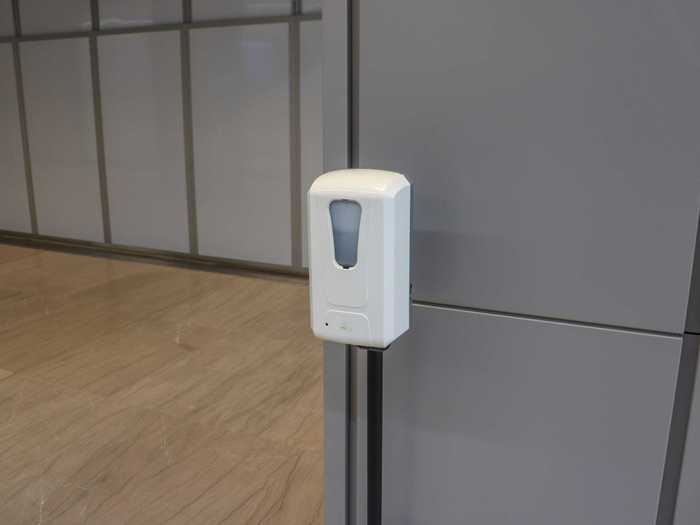
The second-floor perimeter will soon be dotted with restaurants that overlook the main floor. Amtrak projects the retail side of Moynihan will be open later in 2021.
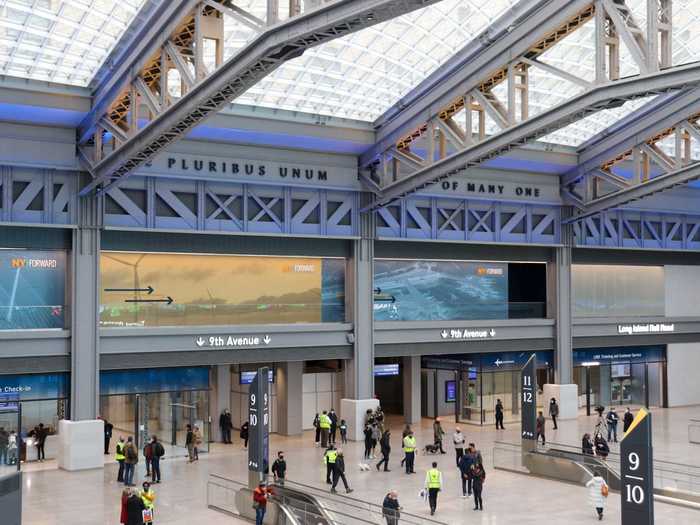
As for now, the second floor serves as a balcony for curious New Yorkers gazing upon their new station.
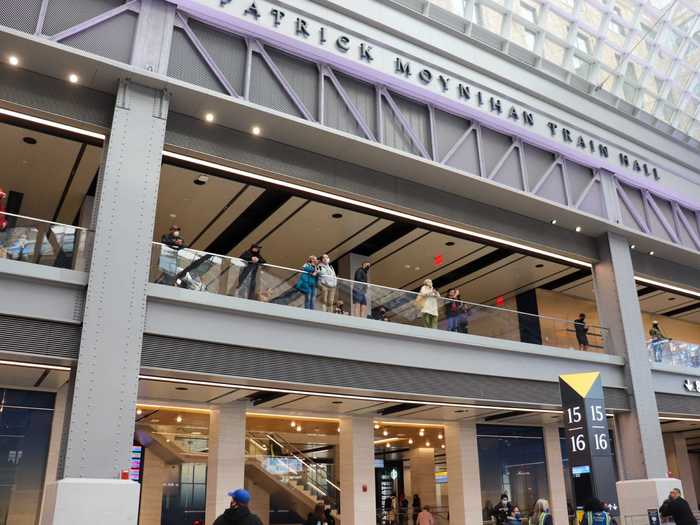
Ramps, stairs, escalators, and elevators connect the two levels, with this being the main staircase of the hall.
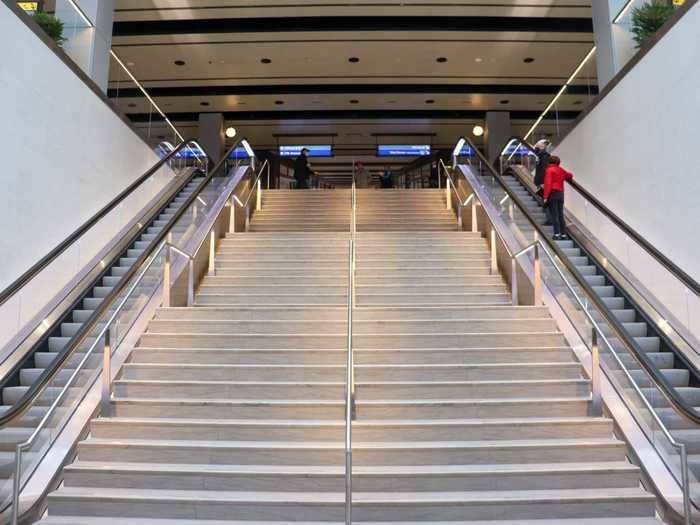
It leads up to the mid-block concourse, which separates the original 1912 post office from the annex building that will house Facebook.
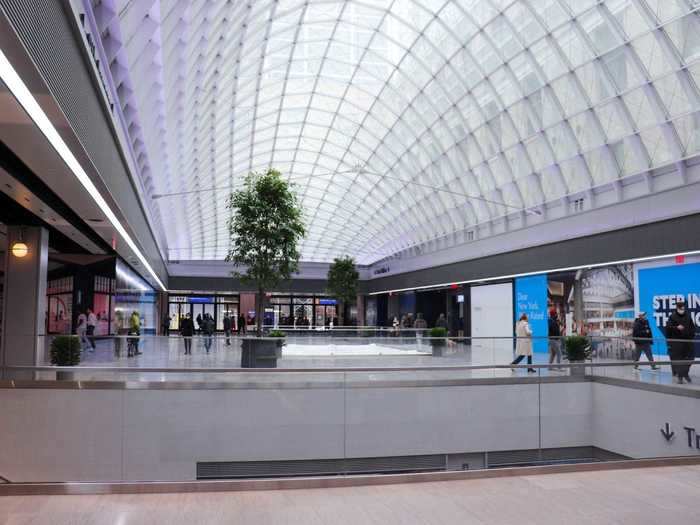
This concourse marks the end of the current facility, but it will soon be expanded all the way to 9th Avenue next year with retail shops and a food hall.
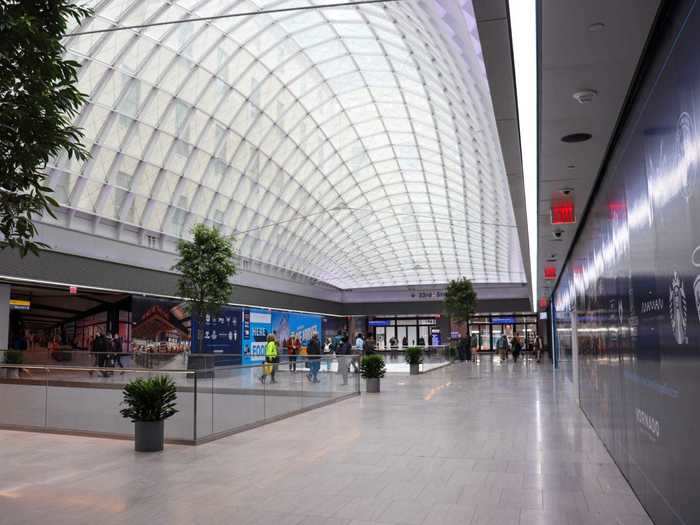
The mid-block entrances on either side of the concourse will primarily serve taxis and ride-hailing apps, with each relegated to one side in order to help ease congestion.
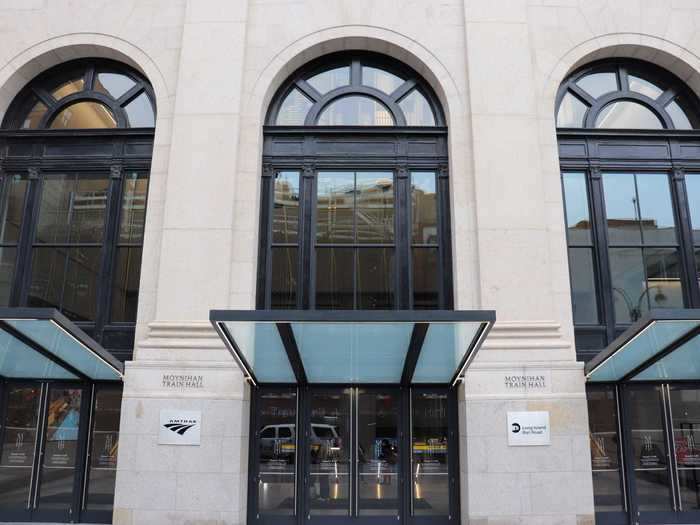
Here's the 31st Street entrance, just a few steps from the train hall.
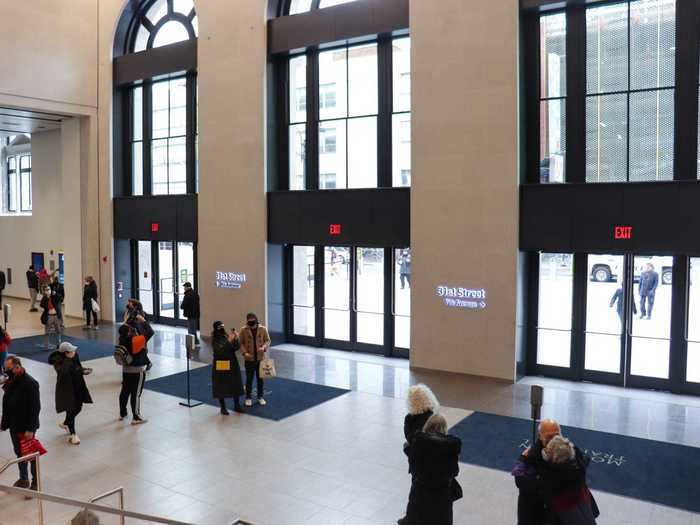
Above it is one of the hall's art installations, a piece by Elmgreen and Dragset named "The Hive," which features upside-down buildings lit by LED lights.
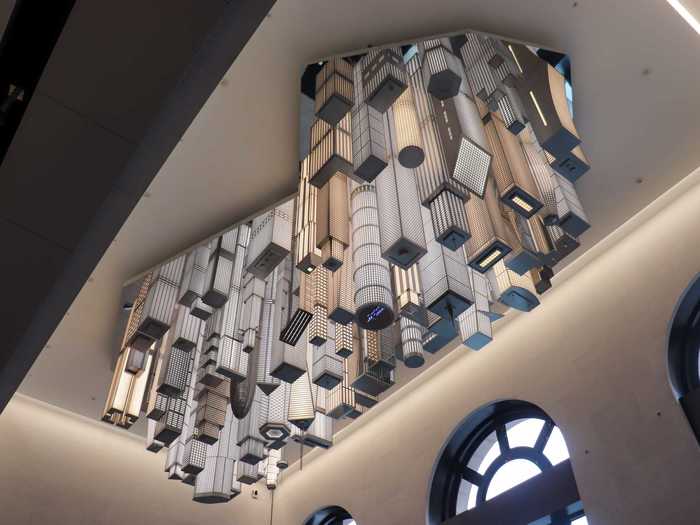
Moynihan also features a premium lounge on the second floor for Amtrak's top riders, like first class passengers on Acela, sleeper room customers, and the most frequent riders.
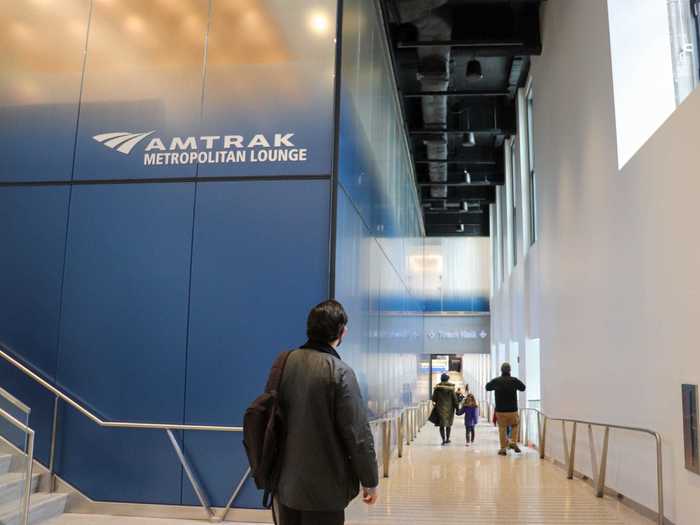
The Metropolitan Lounge, formerly known as ClubAcela, has the capacity for around 100 visitors and has a design that rivals some airport lounges.
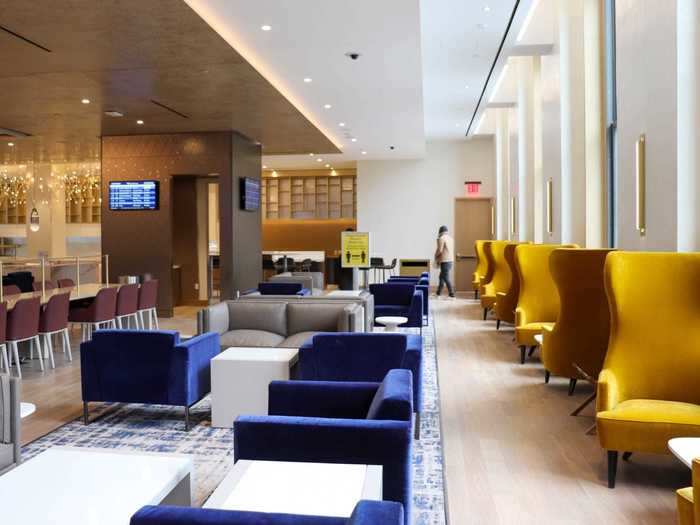
There's no shortage of seating options - whether it be plush armchairs or desk chairs - to suit visitors
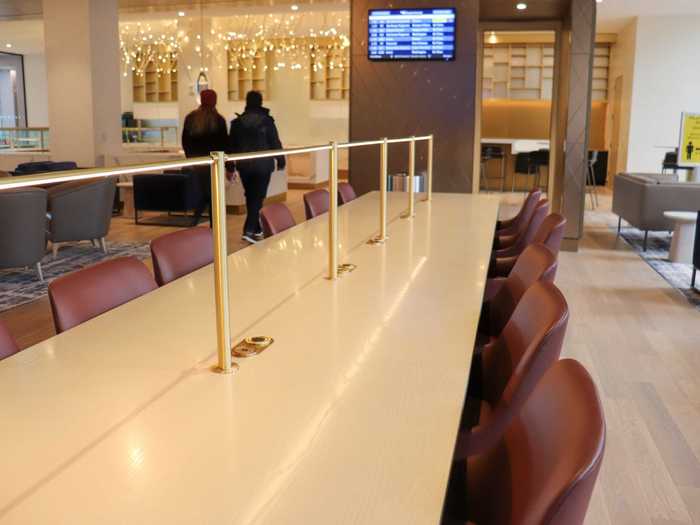
And for business travelers, there's also a desktop and printer setup.
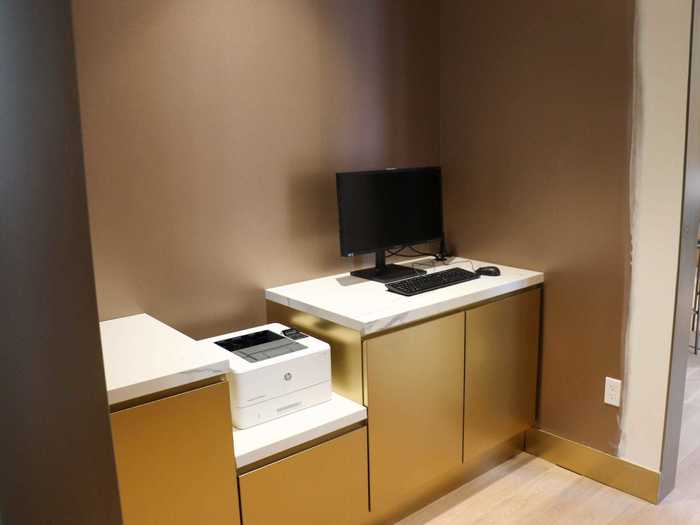
Social distancing signage dots the lounge but no chairs or seats have been removed.
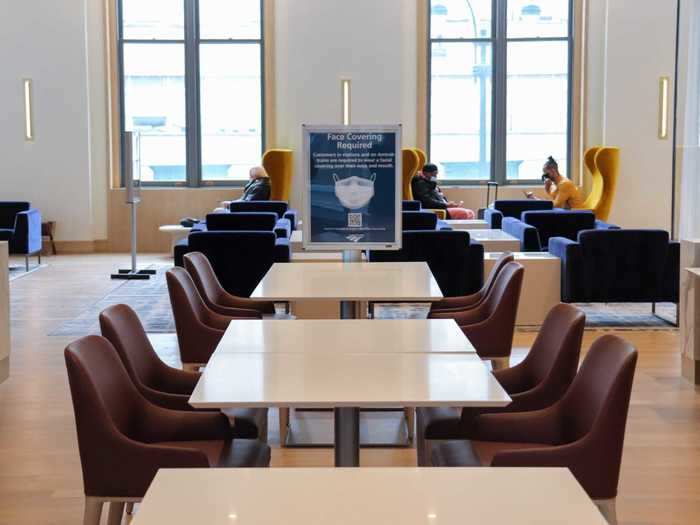
The lounge is equipped to serve complimentary food and drinks but New York City currently bans indoor dining so those plans have been put on hold.
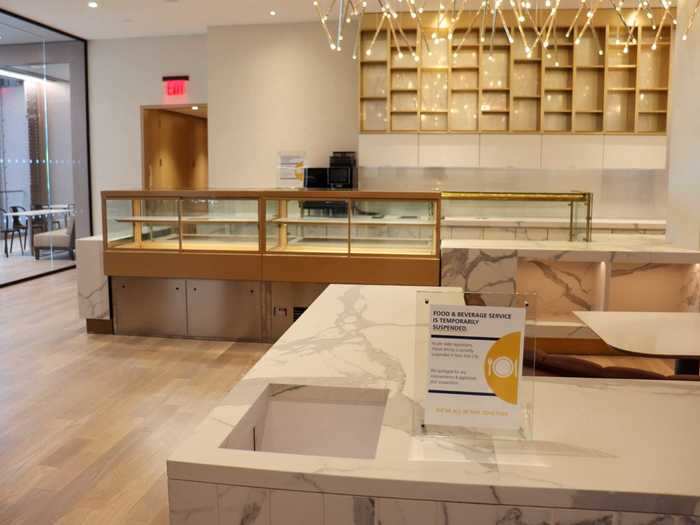
There are two sections to the lounge, a quiet indoor area and a balcony that overlooks the main hall.
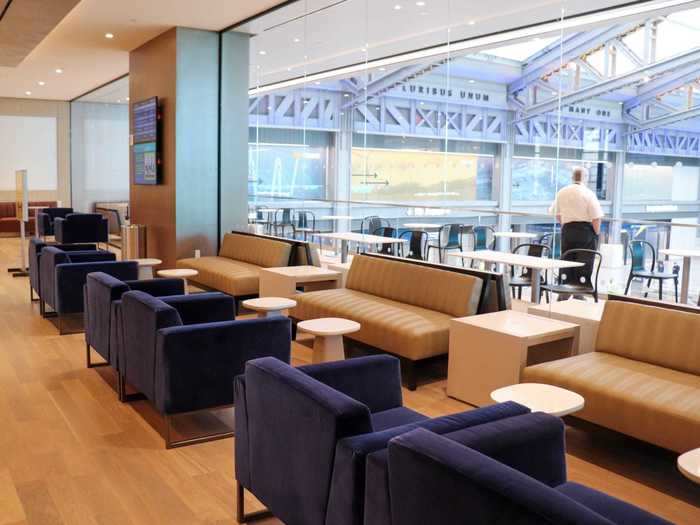
Tables and chairs on the balcony offer a unique people-watching opportunity.
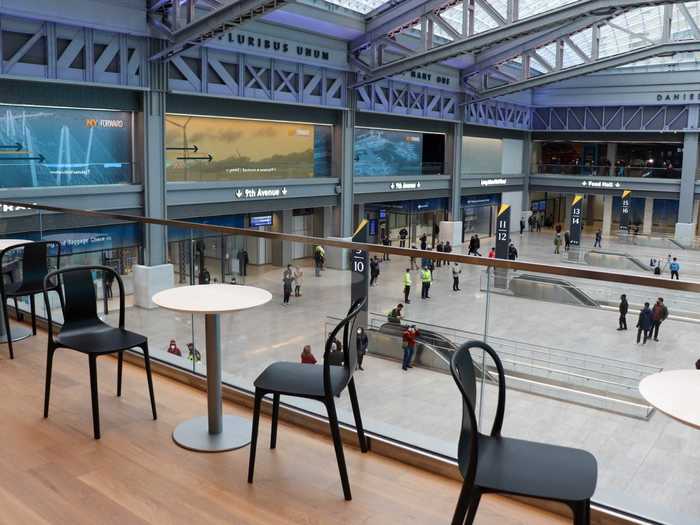
The wooden window frames in the lounge were rebuilt by Amtrak and can be opened by visitors.
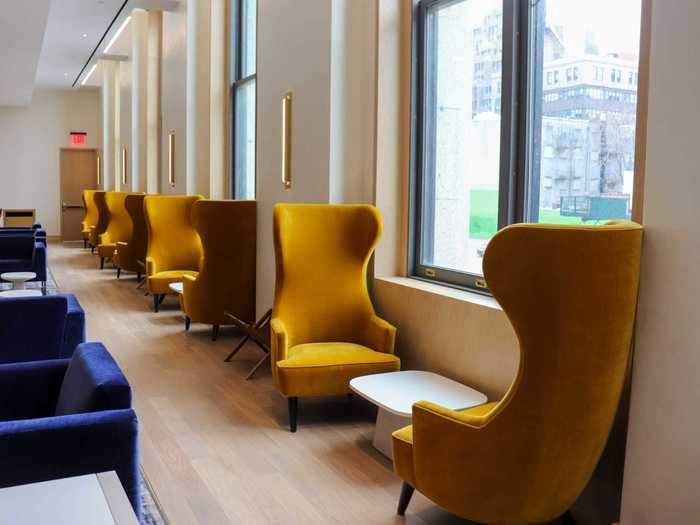
Passengers looking for some fresh air need only open one of the pulley-operated windows.
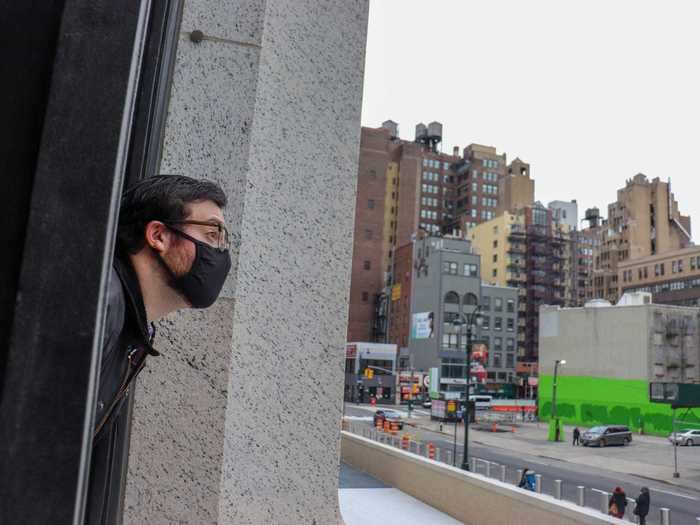
The lounge will remain largely empty for the time being, with Amtrak ridership down over 50%, but it will be a great reason to head to the station soon.
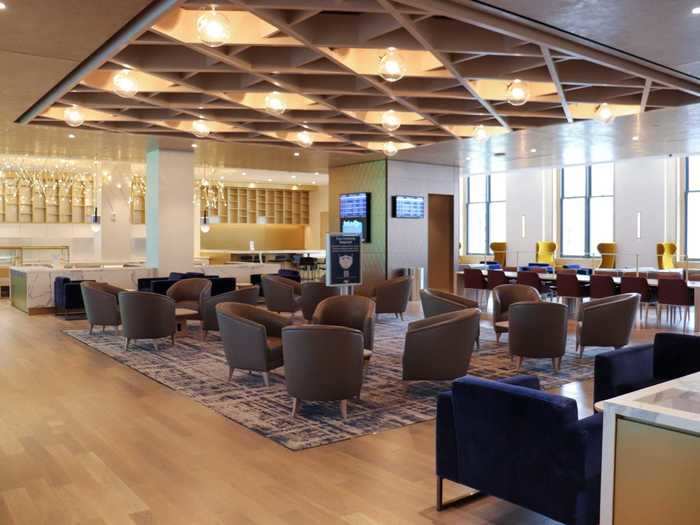
The train hall is a welcomed sight for New Yorkers who've long languished under the low ceilings of Penn Station. What was once a city's embarrassment is now becoming a destination in itself, a station worth arriving early to enjoy.
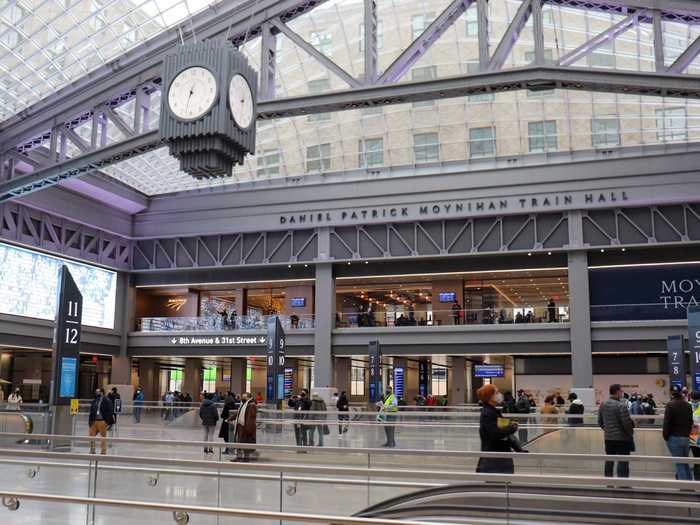
The first day saw everything from a marriage proposal between two train enthusiasts, to visitors wearing Stanford White masks in honor of the famed architect.
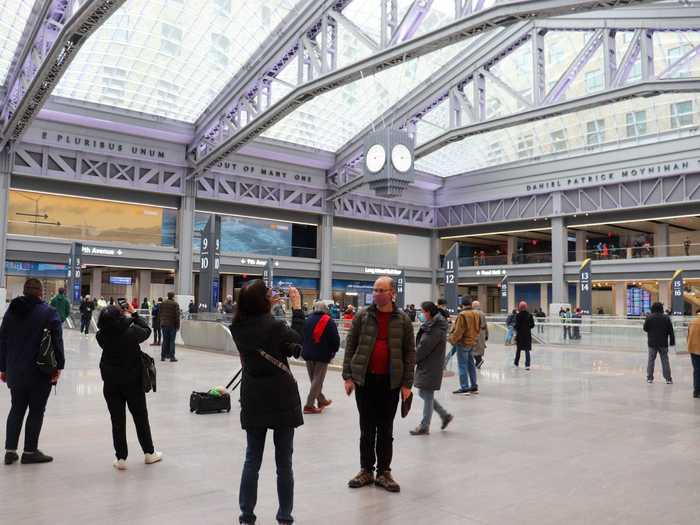
And Friday was just the start of many firsts for the ever-growing train hall as it expands its retail and dining options.
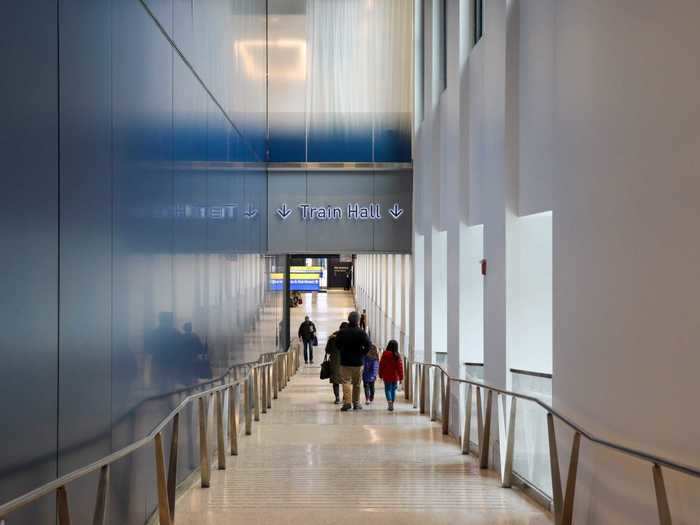
Its stunning design aside, the station's greatest feature is the pride that it sparks in its local visitors.
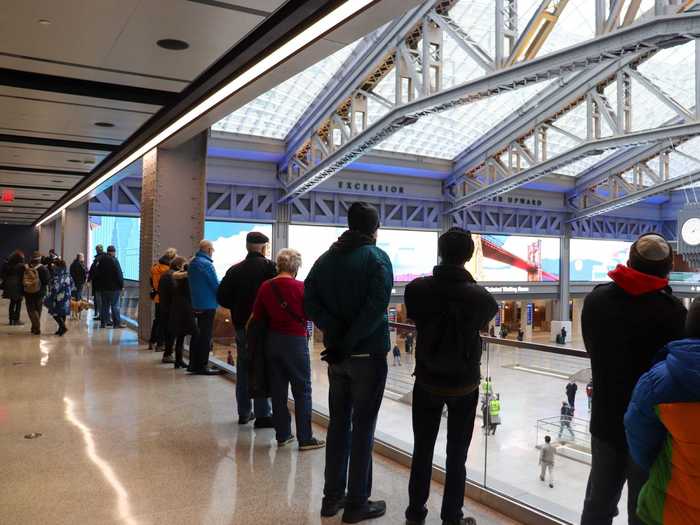
But is this the train station that New Yorkers deserve? No.
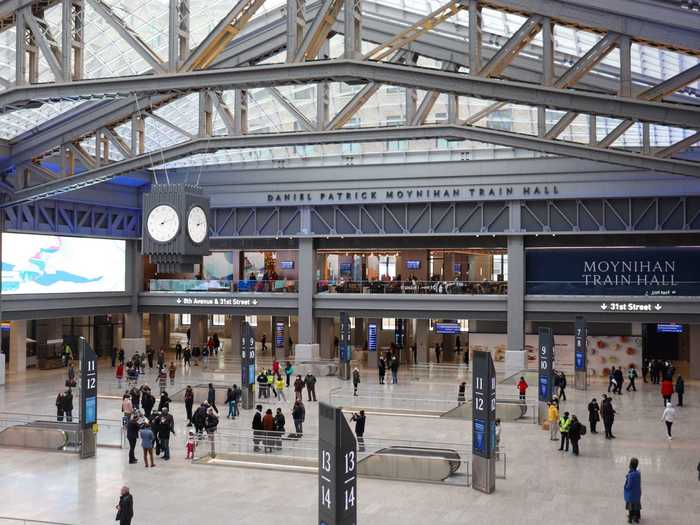
Moynihan Train Hall is an impressive first step in revitalizing an eyesore for New York City and the national rail network. But it can't replace what was lost in 1963.
The original Pennsylvania Station was an architectural marvel, the meticulous and awe-inspiring design of which imbued the importance of the city on every visitor that passed through its doors and arrived on its tracks. This train hall sits in the basement of a former post office.
New Yorkers and those who spend millions visiting the city by rail each year deserved better, but what they got in Moynihan Train Hall was a consolation prize. Hopefully, it will inspire future investment in the railroads that help power the greatest city in the world.
READ MORE ARTICLES ON
Popular Right Now
Popular Keywords
Advertisement